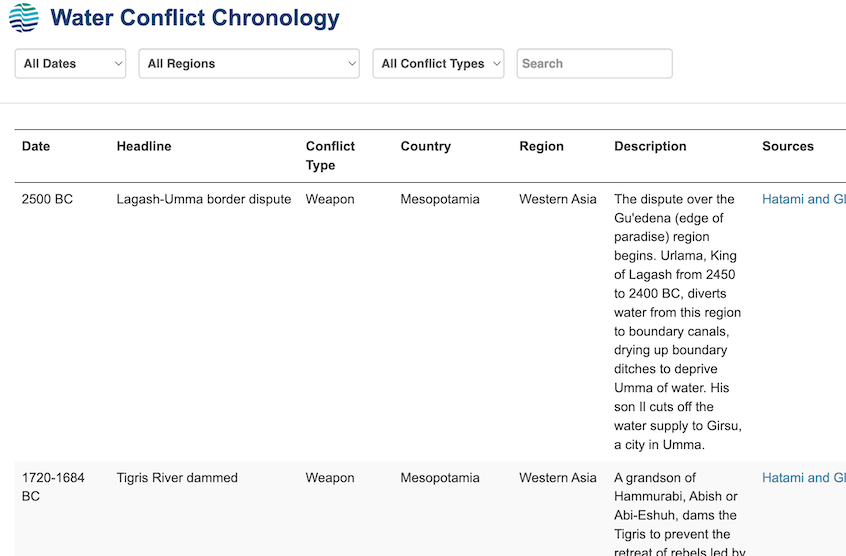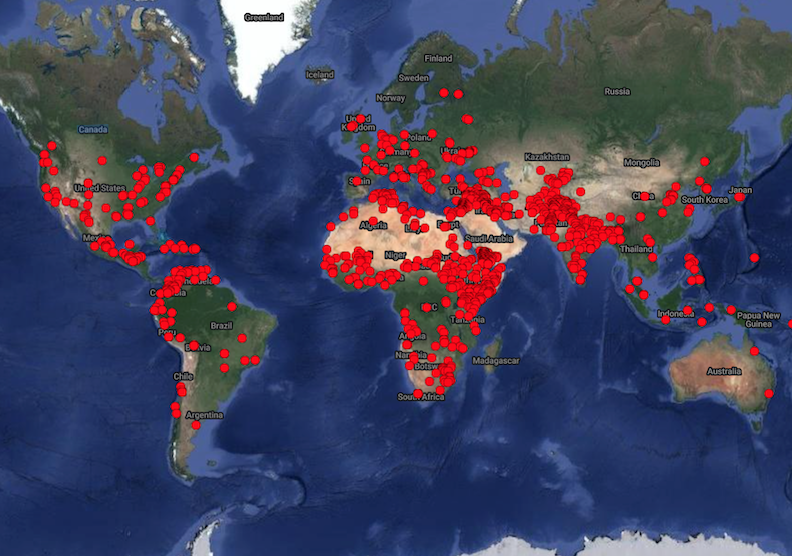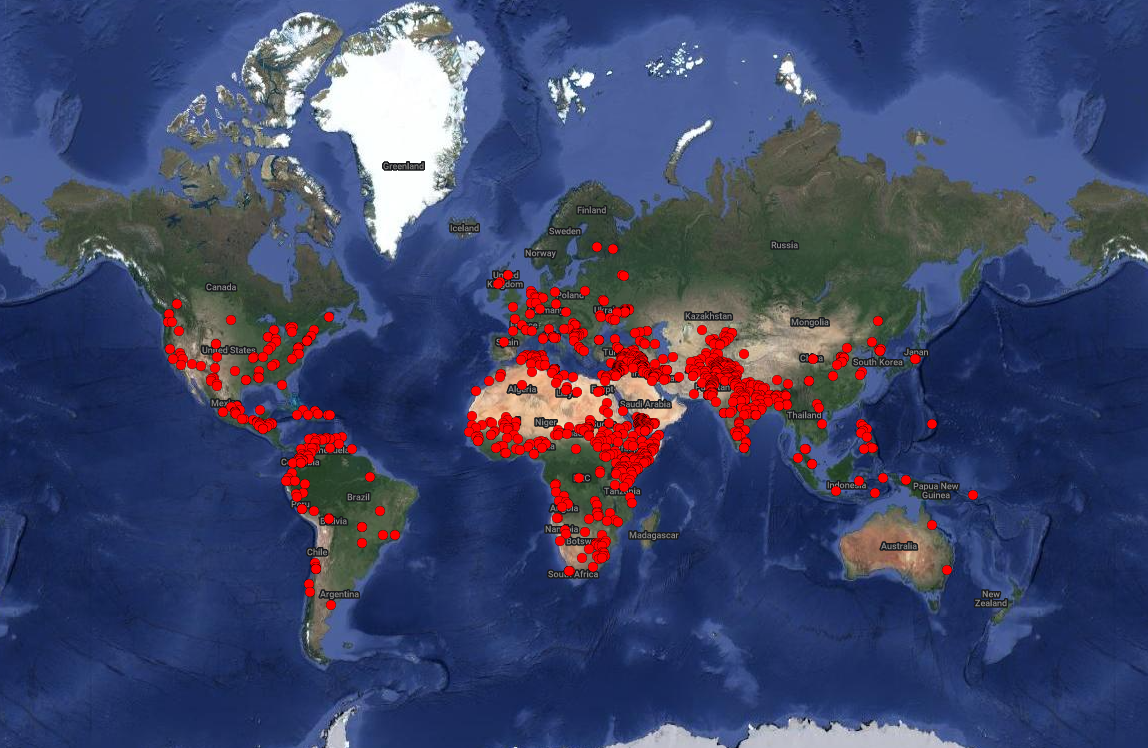260+ River Basins are shared by two or more countries and can become sources of tension or cooperation.
Source: United Nations Watercourses Convention
By 2040 nearly 1 in 4 children globally could live in areas with very limited water, increasing the risk of illness, water poverty, and conflicts.
Source: UNICEF report on World Water Day, 2017
6% decline in GDP by 2050 is expected in some regions due to reduced availability or quality of freshwater, potentially contributing to cross-border migration.
Source: World Bank
Water resources and water infrastructure are not only triggers of conflict—they can be a casualties of conflict or used as weapons as well. In regions where water scarcity is becoming an ever-increasing concern, water may become a driver of conflict and violence. And in parts of the world where violent conflict is occurring, vital water infrastructure can be damaged or destroyed, in some cases purposefully, to cause harm to the opposing side. In response to these critical issues, the Pacific Institute is leading the effort to identify, track, and analyze water-related conflict from around the world.
By gathering, analyzing, and mapping water-related conflicts for more than 30 years, the Pacific Institute has helped to raise awareness, identify trends, and outline potential solutions for these complex issues. Its work does not exist in isolation, however. In collaboration with distinguished partners such as the World Resources Institute, the Water, Peace, and Security Partnership, Oregon State University, and researchers from around the world, the Pacific Institute has been instrumental in developing novel tools and strategies intended to support mediation of water-related conflicts.
The Pacific Institute’s Water Conflict Chronology stands as a significant contribution to efforts aimed at addressing inequities in water resource management, keeping peace, and protecting critical infrastructure and resources during violent conflicts. . This widely respected resource traces the history of water as a trigger, a casualty, or a weapon of violent conflict. Since the 1980s, the Pacific Institute has been compiling and curating data on water conflicts, a testament to its commitment to this issue.
1900+ Water conflict incidents catalogued from 2500 BCE to 2023


Additions, modifications, and updates to the Chronology are posted periodically, with major revisions in 2018, 2019, and 2022. A major update in November 2023 expanded the catalog of events to more than 1,600 incidents that trace back to the earliest known water war in ancient Mesopotamia, 4,500 years ago. The latest update in August 2024 resulted in addition of 300 new instances of violent conflicts associated with water resources and water systems. The new entries capture all water-related incidents of violence through the end of 2023.
“As water crises accelerate today, they trigger systemic stresses that spark conflict, food insecurity, and human migration. Fortunately, the Pacific Institute helps us learn from past and present water conflicts in order to map paths to a more peaceful, stable, equitable water world in the changing climate.” – J. Carl Ganter
Managing Director, Circle of Blue
GLOBAL MEDIA COVERAGE
Water-Related Conflict On The Rise Across The World, Study Finds
Global surge of water-related violence led by Israeli attacks on Palestinian supplies – report
Violence over water is on the rise globally. A record number of conflicts erupted in 2023
War, Drought Cause Spike in Violent Water Conflicts
Water In Conflict Is Increasing
Water and warfare: the battle to control a precious resource
Russia and Israel lead global surge in attacks on civilian water supplies
It’s Not Just Iran: Conflict Over Water Resources Is on the Rise – The Good Men Project
Water wars: The new normal? | Nagaland Post
War takes toll on Ukraine water infrastructure and environment (esemag.com)
War in Ukraine threatens freshwater resources and water infrastructure (smartwatermagazine.com)
Sharing cross-border water resources: Cooperation or conflict? (dhakatribune.com)
Climate change is making armed conflict worse. Here’s how. – The New York Times (nytimes.com)
Other Resources
- As water becomes a weapon of war, we must focus on cooperation and peace
- Impact of the Russia–Ukraine armed conflict on water resources and water infrastructure | Nature Sustainability
- Water-related conflicts: definitions, data, and trends from the water conflict chronology | IOPscience
- Rivers and Water Systems as Weapons and Casualties of the Russia‐Ukraine War | Gleick – 2023 – Earth’s Future – Wiley Online Library
- Full article: The destruction of the Kakhovka dam and its consequences | tandfonline.com
- Op-Ed: Protecting the Environment in Times of War | Pacific Institute
- 2023 Was a Record Year for Violence Over Water Resources Across the Globe
- Violence over Water Increases Globally According to New Data from Pacific Institute Water Conflict Chronology
- Water Conflicts Worsen: New Pacific Institute Analysis Identifies Hundreds of New Instances of Violence over Water Resources
- New Water Conflict Prediction Tool Uses Data from Pacific Institute’s Water Conflict Chronology
- Violence over Water Increases: New Data from the Water Conflict Chronology
- Pacific Institute Statement on White House Action Plan on Global Water Security
For more information, contact:
Morgan Shimabuku
Senior Researcher, Pacific Institute
mshimabuku@pacinst.org


